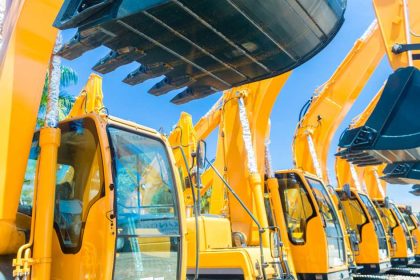An Australian study has unveiled a groundbreaking ‘cooling strategy’ that could massively reduce the scorching temperatures of Riyadh, one of the world’s hottest desert cities.
Conducted by the University of New South Wales, the innovative approach combines highly reflective ‘super cool’ building materials, irrigated greenery, and energy retrofitting measures to drop outdoor temperatures by up to 4.5°C.
The study is the first of its kind to investigate the large-scale benefits of modern heat mitigation technologies in a city environment, with researchers hoping to incorporate their findings into a similar strategy in Australia’s own sweltering cities.
UNSW Scientia Professor Mattheos Santamouris, Anita Lawrence Chair in High-Performance Architecture and senior author of the study, said the potential of these technologies was ‘transformative”.
“The project demonstrates the tremendous impact advanced heat mitigation technologies and techniques can have to reduce urban overheating, decrease cooling needs, and improve lives,” he said.
Too hot to handle
Riyadh, the capital of Saudi Arabia, regularly sees extreme temperatures well above 50°C during summer, making it one of the hottest cities anywhere in the world. And thanks to a dangerous combination of rapid urbanisation and worsening climate change, heat levels are rising even higher, straining the city’s energy supply and harming the health of citizens.
Prof. Santamouris said the key factors contributing to Riyadh’s extreme heat were the “limited greenery and extensive artificial surfaces, like asphalt and concrete, trap heat, exacerbating the city’s temperature”.
The large-scale cooling simulations used in the study found that transforming the desert cityscape with cooling panels and irrigated greenery would also help improve cooling energy consumption by up to 16 per cent.
The study also explored the energy impact of retrofitting heat mitigating measures for all 3323 buildings in Riyadh with upgrades like improved windows, insulation, solar, and cool roofs, seemingly reducing the cooling demand by up to 35 per cent.
However, the findings did come with one caveat: the implementation of the strategy would have to be a very deliberate and costly endeavour. Those same simulations showed that a ‘blind application’ of those same cooling tech and strategies, lacking scientific optimisation, would actually lead to a “substantial increase’ in city temp.
The benefits of ‘keeping cool’
Regardless of the material cost and planning time, Prof. Santamouris said the benefits of cooling the city far outweighed any potential pitfalls, claiming that the change would improve thermal comfort, reduce health issues, lower pollutant concentrations, and enhance human productivity.
Previous research has also demonstrated a reduction in heat-related deaths when similar cooling strategies were implemented in other cities.
The professor said these findings are a significant step towards sustainability, stating, “this represents a substantial reduction in energy needs for Riyadh, reducing cooling costs and improving the quality of life for its residents”.
“For a sweltering city the size of Riyadh, significantly reducing cooling needs is also tremendous for sustainability.”
The research team now aims to collaborate with the Royal Commission of Riyadh to implement the tailored heat mitigation plan, marking the world’s largest initiative of its kind.
“Once implemented at the city scale, these advanced heat mitigation technologies will deliver important health, sustainability, and economic outcomes for the city for years to come,” said Prof. Santamouris.






